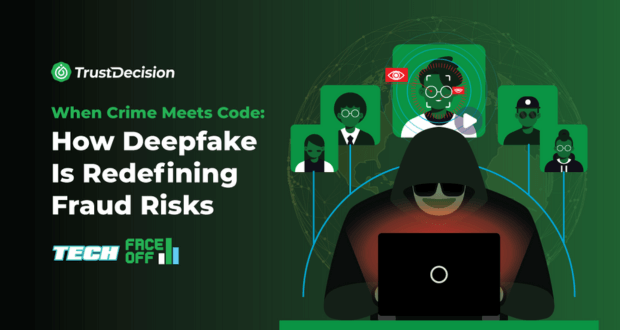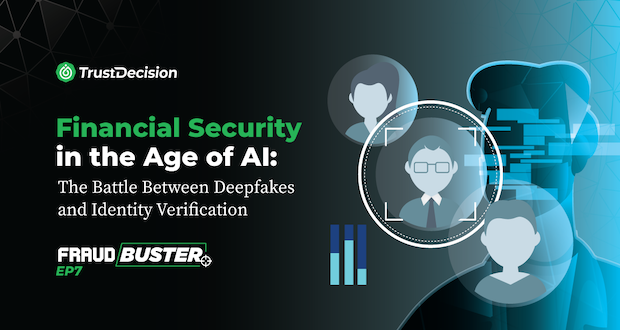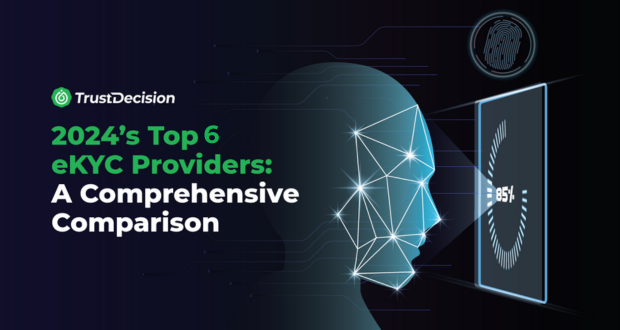Understanding Social Engineering and Identity Theft
Social Engineering and Its Relevance in Cybersecurity
Social engineering is a manipulation technique that exploits human error to gain private information, access, or valuables. In the context of cybersecurity, social engineering attacks are designed to trick individuals into divulging confidential information or performing actions that compromise security. Unlike traditional hacking methods that rely on technical vulnerabilities, social engineering leverages psychological manipulation to achieve its goals. This makes it a particularly insidious form of attack, as it targets the human element, often considered the weakest link in cybersecurity defenses.
What Identity Theft Is and How It Is Used in Social Engineering Attacks
Identity theft involves the unauthorized acquisition and use of someone's personal information, such as Social Security numbers, credit card details, or login credentials, usually for financial gain. In social engineering attacks, identity theft is often the first step. Cybercriminals steal personal information to impersonate the victim, thereby gaining the trust of other individuals or systems. This stolen identity can then be used to execute various types of social engineering attacks, making them more convincing and effective.
Different Types of Social Engineering Attacks
There are several types of social engineering attacks that cybercriminals use to exploit identity theft. Understanding these can help in recognizing and mitigating the risks associated with them. Here are some of the most common types:
- Phishing: Mass emails or messages that appear to come from reputable sources, aiming to steal sensitive information.
- Spear Phishing: Targeted phishing attacks tailored to a specific individual or organization, often using information gathered through identity theft.
- Pretexting: Creating a fabricated scenario to trick victims into providing personal information.
- Baiting Attack: Offering something enticing to lure victims into providing their personal information.
- Vishing (Voice Phishing): Using phone calls to impersonate legitimate entities and extract personal information from victims.
By understanding these types of social engineering attacks, businesses and individuals can better prepare and implement effective identity theft protection measures.
Top 5 Social Engineering Attacks That Use Identity Theft
1. Phishing
Phishing is one of the most common and well-known types of social engineering attacks. It involves sending fraudulent communications, usually in the form of emails, that appear to come from a reputable source. The goal is to trick the recipient into revealing sensitive information such as login credentials, credit card numbers, or other personal data. These emails often contain links to fake websites that mimic legitimate ones, where victims are prompted to enter their information.
Examples of Identity Theft in Phishing
Phishing attacks frequently rely on identity theft to make their fraudulent messages more convincing. For example, an attacker might use stolen email addresses and personal details to craft a message that appears to come from a trusted colleague or a well-known company. By leveraging this stolen identity, the attacker increases the likelihood that the victim will fall for the scam. Common scenarios include emails that appear to be from a bank asking for account verification or from an online retailer confirming a purchase.
By understanding the mechanics of phishing and implementing these identity theft protection measures, you can significantly reduce the risk of falling victim to this type of social engineering attack.
2. Spear Phishing
Differs from General Phishing
Spear phishing is a more targeted form of phishing that focuses on a specific individual or organization, rather than casting a wide net like general phishing. Attackers conduct extensive research on their targets to craft highly personalized and convincing messages. These messages often appear to come from a trusted source, such as a colleague, business partner, or a known service provider, making them much harder to detect.
The key difference between spear phishing and general phishing lies in the level of customization. While general phishing relies on generic messages sent to a large number of people, spear phishing uses detailed information about the target to increase the likelihood of success.
Examples of Identity Theft Used in Spear Phishing
Spear phishing attacks often leverage identity theft to gather the information needed to personalize their messages. For instance, an attacker might steal login credentials, email addresses, or other personal details from a company's database. Using this information, they can craft an email that appears to come from a high-ranking executive within the company, requesting sensitive information or instructing the recipient to perform a specific action, such as transferring funds.
Another example is an attacker using stolen social media information to send a personalized message to an employee, pretending to be a friend or family member in need of urgent help. The familiarity and urgency make it more likely that the victim will comply with the request.
By understanding the nuances of spear phishing and implementing these protective strategies, you can better safeguard your organization against this highly targeted and potentially damaging type of social engineering attack.
3. Pretexting
Pretexting is a social engineering technique where an attacker creates a fabricated scenario, or pretext, to manipulate a victim into divulging personal information or performing actions that compromise security. Unlike phishing, which often relies on mass communication, pretexting is highly targeted and involves direct interaction with the victim. The attacker typically impersonates someone the victim trusts, such as a colleague, authority figure, or service provider, to make the pretext more believable.
Examples of Identity Theft in Pretexting Scenarios
Pretexting often involves identity theft to make the fabricated scenario more convincing. For example, an attacker might steal personal information such as names, job titles, and contact details to impersonate an executive within a company. Using this stolen identity, the attacker could call an employee and request sensitive information, such as login credentials or financial data, under the guise of an urgent business need.
Another common scenario involves attackers posing as IT support personnel. They might use stolen information to convince employees that they need to provide their passwords or install malicious software under the pretext of resolving a technical issue. The use of accurate personal details makes the pretext more credible, increasing the likelihood of success.
By understanding the tactics used in pretexting and implementing these identity theft protection measures, you can significantly reduce the risk of falling victim to this type of social engineering attack.
4. Baiting Attack
A baiting attack is a type of social engineering attack where the attacker lures victims into providing sensitive information or compromising their security by offering something enticing. This "bait" can be in the form of free software, music downloads, or even physical items like USB drives left in public places. The bait often contains malware or leads to a malicious website designed to steal personal information. The key element of a baiting attack is the use of an attractive offer to exploit the victim's curiosity or greed.
Examples of Identity Theft in Baiting Attacks
Baiting attacks frequently involve identity theft to make the bait more appealing and credible. For instance, an attacker might create a fake website offering free software downloads. To make the site appear legitimate, they could use stolen logos, branding, and even testimonials from real users. When victims download the software, they unknowingly install malware that steals their personal information.
Another example is leaving infected USB drives in public places like parking lots or office lobbies. These drives might be labeled with enticing descriptions such as "Confidential" or "Employee Salaries." When someone picks up the drive and plugs it into their computer, the malware on the drive activates, stealing personal information and potentially compromising the entire network.
By understanding the mechanics of baiting attacks and implementing these protective measures, you can significantly reduce the risk of falling victim to this type of social engineering attack.
5. Vishing (Voice Phishing)
Vishing, or voice phishing, is a type of social engineering attack where the attacker uses phone calls to impersonate legitimate entities and extract personal information from victims. Unlike traditional phishing, which relies on email or text messages, vishing exploits the trust people place in voice communication. Attackers often pose as bank representatives, government officials, or technical support personnel to deceive victims into revealing sensitive information such as Social Security numbers, bank account details, or login credentials.
The impact of vishing can be severe, leading to financial loss, identity theft, and unauthorized access to personal and corporate accounts. Because vishing attacks are conducted over the phone, they can be more challenging to detect and prevent compared to email-based phishing.
Examples of Identity Theft Used in Vishing
Vishing attacks often involve identity theft to make the fraudulent calls more convincing. For example, an attacker might use stolen personal information to pose as a bank representative. They could call the victim, verify some basic details (which they already have), and then ask for additional sensitive information under the pretext of resolving a security issue or verifying account activity.
Another example is an attacker posing as a government official, using stolen identity details to convince the victim that they owe taxes or have legal issues that need immediate attention. The attacker may then request payment or additional personal information to "resolve" the issue.
By understanding the tactics used in vishing and implementing these protective measures, you can significantly reduce the risk of falling victim to this type of social engineering attack.
TrustDecision's Identity Verification Solution
In the face of increasing threats from identity theft and social engineering attacks, robust identity verification solutions are essential for protecting sensitive information and maintaining trust. TrustDecision offers a comprehensive Identity Verification solution designed to address these challenges effectively. Here are three key features of TrustDecision's Identity Verification solution:
Real-Time Verification
TrustDecision's Identity Verification solution provides real-time verification by instantly validating identities using a combination of biometric data and official documents. This ensures that only legitimate users gain access to sensitive information and systems. The real-time aspect of the verification process helps in quickly identifying and mitigating potential threats, thereby enhancing overall security.
Multi-Layered Security
To ensure the highest level of protection against identity theft, TrustDecision employs multiple layers of security checks. These include advanced algorithms, machine learning techniques, and cross-referencing with various databases to verify the authenticity of the provided information. This multi-layered approach makes it significantly harder for attackers to bypass the security measures, providing robust protection against various types of social engineering attacks.
Global Coverage
TrustDecision's Identity Verification solution supports identity verification across multiple countries and regions, making it suitable for international businesses. This global coverage ensures that businesses can verify the identities of users from different parts of the world, maintaining a consistent level of security regardless of geographical location. The solution is designed to comply with various international regulations and standards, further enhancing its reliability and effectiveness.
By leveraging TrustDecision's Identity Verification solution, businesses can significantly reduce the risk of identity theft and social engineering attacks. The combination of real-time verification, multi-layered security, and global coverage makes it a powerful tool for protecting sensitive information and maintaining trust in digital interactions.
Conclusion
In today's increasingly digital world, understanding the various types of social engineering attacks that rely on identity theft is crucial for both individuals and businesses. These attacks, which include phishing, spear phishing, pretexting, baiting, and vishing, exploit human psychology and stolen personal information to deceive victims and gain unauthorized access to sensitive data. By recognizing and understanding these tactics, you can better prepare and defend against them.
The consequences of identity theft in social engineering attacks can be severe, leading to financial loss, reputational damage, and operational disruptions. Therefore, it is essential to implement robust identity theft protection measures. These measures include educating employees, verifying requests, using advanced security solutions, and fostering a culture of vigilance. Proactive steps to protect personal and corporate information can significantly reduce the risk of falling victim to these attacks.
Given the sophisticated nature of modern social engineering attacks, businesses must adopt advanced solutions to safeguard against online identity theft and financial identity theft. TrustDecision's Identity Verification solution offers real-time verification, multi-layered security, and global coverage, making it an effective tool for protecting sensitive information. By leveraging such solutions, businesses can enhance their security posture, build trust with customers, and mitigate the risks associated with identity theft.









.jpeg)




